Last week we hosted our third Digital Marketing Strategy Bootcamp in Toronto. Like our previous events, the Bootcamp was sold-out and attended by a fantastic mix of folks from client-side marketing departments, agency account/planning teams, and freelance/start-ups. Having such a diverse group of participants makes the day so much more enjoyable and valuable, particularly for the group exercises. This aspect is mentioned often by participants in their post-event surveys, which I proudly post online and unfiltered here.
For this past event, we incorporated three different exercises for participants to apply the curriculum and to learn from each other. I was very pleased with how the exercises worked out, as we had great engagement and some terrific ideas. Below is a snapshot of the exercises that were used, some of which you may want to consider incorporating into your own organizations and project work.
Exercise 1: Customer Problems
The purpose of this exercise is to demonstrate how focusing on a specific customer problem can lead to new types of service solutions that are enabled by technology. Participants are split into groups and assigned different brands, customer personas, and contextual goals. They are then instructed to identify a specific problem to solve—something that this persona finds particularly challenging or annoying in achieving their goal. Participants then invent, sketch, and name a new digital service to address this narrow and tightly defined problem. This exercise reinforces the importance of designing solutions based on real (and often overlooked) customer problems, and exploring functional service solutions (as opposed to strictly communication ideas). Based on a few of the participant sketches below, it also gives marketers a newfound appreciation for UX designers :-)
Exercise 2: Customer Moments
The purpose of this exercise is to demonstrate how exploring a customer’s journey to accomplish a goal can lead to new moments for engagement. Participants are again given brands, personas, and contextual goals and are instructed to explore what is happening before, during, and after a particular event. They then focus in on key moments where there may be an opportunity to reduce a point of friction or introduce a new moment of delight. Participants then determine how digital technology/media may be used to address this moment, by identifying the opportunity, the tactic, and the appropriate digital channel. This exercise highlights the opportunities that marketers have to engage with customers in new ways at different (and often overlooked) moments over time and the possibilities of connecting different tactics and touchpoints more elegantly. Filling in Opportunity Cards also stimulates a valuable discussion among participants to select the most appropriate set of digital activation channels.
Exercise 3: Client Objectives
My favourite group exercise comes at the end of the day (coinciding with the serving of cocktails!) is when our ‘guest client’ arrives. This exercise is focused on having participants put all of the lessons of the day to use in order to solve a set of real-world marketing challenges. This time we had the awesome Carey Suleiman from WWF Canada as our client. She inspired all of us with an overview of the great work that WWF Canada is doing and introduced the various marketing briefs. After each team developed and presented solutions, Carey had the unenviable task of selecting a winner among some very innovative ideas, and awarding a prize (hello symbolically adopted animal plushies!) Often when I conduct in-house training for clients, I will develop exercises based on brands outside of their own category. It can be a great way to unshackle participant thinking, and explore new solutions. We then have the opportunity to reflect back on how this new thinking can be applied back to their own brands and challenges—often with surprising relevancy.
Thank you again for all of those who attended the Bootcamp. None of these exercises would have worked had it not been for your enthusiasm and teamwork! For those interested in possibly attending a future event, I am currently scheduling a few more 2017 dates and will announce the details shortly.





